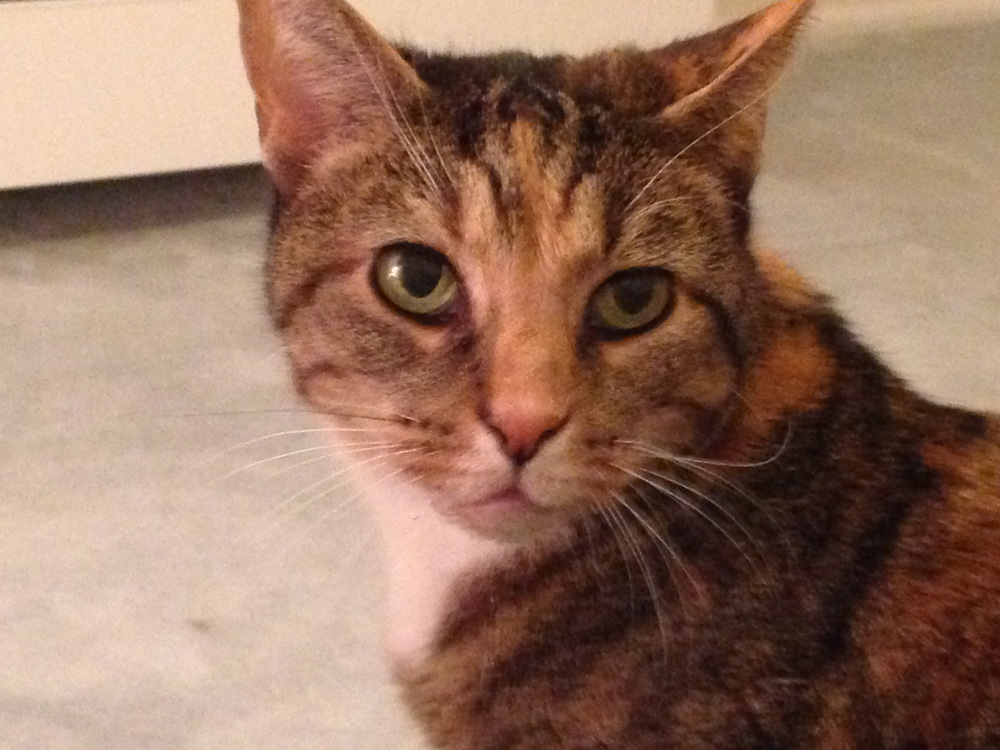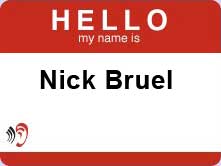TeachingBooks.net is delighted to welcome Nick Bruel, author and illustrator of the popular Bad Kitty Series, as our featured guest blogger.
Each month, we ask one distinguished author or illustrator to write an original post that reveals insights about their process and craft. Enjoy!

Creative Writing and the Tax Code
or
That Really Was The Best Title I Could Come Up With
By Nick Bruel
Good morning, Nick.
Good morning.
Thank you for meeting with me. I know it’s early.
No problem. I appreciate the invitation.
So, how often do you actually talk to yourself in the mirror?
Oh, not as often as you might think. Sometimes if there’s no mirror around, I hold two tin cans with a string attached up to each of my ears. It’s like I’m playing telephone with myself!
That’s pretty neat.
Thank you. I invented it myself.
So, what do you want to talk about today? Fragment sentences? Maybe: we could talk about, improper use; of punctuation – marks!
No, I’d rather talk about creative writing and the tax code.
The tax code? Really? That sounds pretty dull.
True. But this all leads to a point I want to make.
Sigh. Fine. Go ahead.
Schedule C, my personal favorite schedule on the 1040 tax form, is used for reporting income or loss from a business you operate or a profession you practice as a sole proprietor. An activity qualifies as a business if your primary purpose for engaging in the activity is for income or profit and you are involved in the activity with continuity and regularity….
STOP! Stop this. I’m drifting away here. And the fumes from the cat’s litter box are starting to make me woozy.

You really should clean it more often.
You’re not the only one who feels that way.
MEOW!
Not now, Esme. I’m in the middle of a heated conversation here. What does all this dreary tax code stuff have to do with creative writing?
It is dreary, isn’t it? But that’s the point I’m trying to make. See, every creative writing teacher I’ve ever had has always pulled out the same old dictum about how to write a story. They always say, “Write what you know.”
What’s wrong with that?
Well, most of the time there’s nothing wrong with that advice. But the advice is incomplete. The problem here is that I happen to know a lot about tax code. I’ve been doing my own taxes for decades. But what I happen to know really isn’t all that interesting in this case. If I wrote a story about tax code, it would likely be pretty dull.
“Bad Kitty Files As A Sole Proprietor Of A Limited Liability Company” — Yeah, I don’t see much of an audience for that one.
 Precisely. So really the advice teachers need to give students isn’t “Write what you know about” but “Write what you care about.” Much of the time, those two will be the same thing. But a lot of students, especially the younger ones, don’t really know a lot yet. But that’s okay. Kids compensate for what they don’t know with having an active imagination. It’s their imagination that we all need to tap into, because their imagination is home to everything they care about. We all want kids to write stories, but even more importantly we want them to want to write stories.
Precisely. So really the advice teachers need to give students isn’t “Write what you know about” but “Write what you care about.” Much of the time, those two will be the same thing. But a lot of students, especially the younger ones, don’t really know a lot yet. But that’s okay. Kids compensate for what they don’t know with having an active imagination. It’s their imagination that we all need to tap into, because their imagination is home to everything they care about. We all want kids to write stories, but even more importantly we want them to want to write stories.
Hey, isn’t this why you wrote Bad Kitty: Drawn to Trouble (Roaring Brook Press, 2014)?
Oh, you shameless promoter, you! Thank you so much for bringing up that book. Yes, this is precisely why I wrote that book. It’s my “Bad Kitty” book about how to write a “Bad Kitty” book. Kids often ask me if I have a favorite “Bad Kitty” book, and I don’t. I really don’t. But having said that, I will go on the record as saying that Bad Kitty: Drawn To Trouble is probably my most important book. I’d never written a book with so much purpose until I wrote this one. I like to think of it as a 128-page invitation to my readers to become writers. I love what I do, and I want everyone to at least try their hand at writing stories for themselves. They just might love writing as much as I do.
It also happens to be the 10th “Bad Kitty” book, isn’t it?
It is. But I almost didn’t write it.

Really? Shut up, you liar.
No! Really! There were concerns that this book might come off as too academic. There were concerns that introducing a litany of literary terms like “protagonist” and “antagonist” and “foreshadowing” and “plot point” (Common Core fans, please take note) might put off some readers who only open a “Bad Kitty” book to see an ornery pussycat periodically lose her mind. But I honestly think that underestimates my readers. Kids not only need to be challenged in their reading, but, honestly, I think they demand it.
Got anything more to add?
Not really.
Then, I think it’s time we got to work.
I agree. Deadlines wait for no…
MEOW!
Oh, right. First things first. Now, where’s that scoop?
 Listen to Nick Bruel introduce and pronounce his name.
Listen to Nick Bruel introduce and pronounce his name.
Enjoy this Meet-the-Author Book Reading with Nick Bruel featuring Bad Kitty Drawn to Trouble.
See all available resources for the Bad Kitty Series.
See all available resources for Nick Bruel and his books.
This text may not be reproduced without the expressed written consent of Nick Bruel. All images courtesy of Nick Bruel.

Leave a Reply